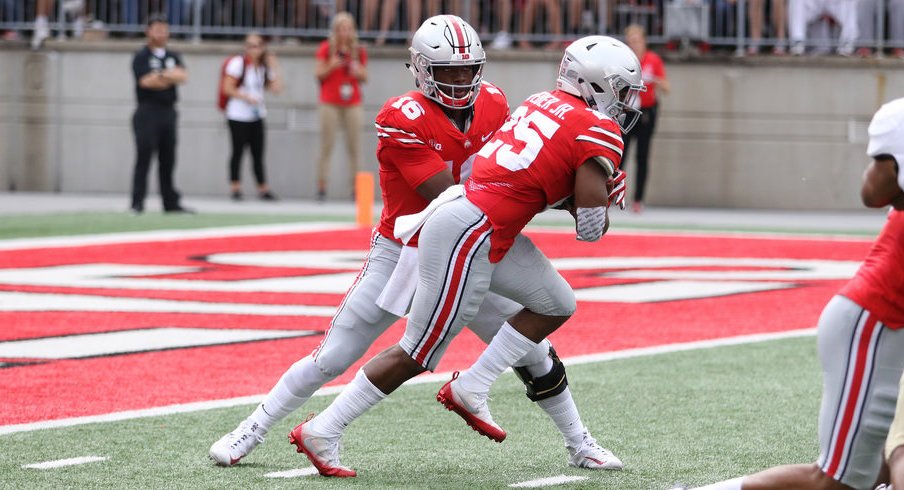One of the greatest strengths of Ohio State quarterback J.T. Barrett is, and always has been his ability to run the zone read to near perfection.
So it only made sense for the Buckeyes to add one more element to Barrett's progression to help get its anemic pass offense back on track. With teams dropping as many as eight defenders into coverage against Ohio State's offense in its first two games, the Buckeyes finally adapted against Army in a 38-7 victory on Saturday.
Running a variety of run-pass option plays - the majority of which resulted in short completions to wide receivers - the Ohio State offense exploded for 586 total yards with Barrett being responsible for 302.
Head coach Urban Meyer, who said he wasn't happy with the way Ohio State called plays in a loss to Oklahoma, praised the Buckeyes' effort following the Army win, making a point to mention his two offensive coordinators.
"I thought Kevin Wilson and Ryan Day did a nice job mixing and matching. It's all how you play, how they're playing – if they're starting to pack it in there, you get outside," Meyer said. "Our RPOs were good. The run-pass options a lot of times (are) where you see J.T. pull the ball and kick it out there and get really plus yards."
The way Ohio State ran its RPO plays can be compared to that of a triple-option offense out of a spread look. If the defensive end crashes on a run play, the quarterback is taught to keep the ball around the edge. The second read becomes the wide receiver, and if the offense has the advantage on the edge, the quarterback is taught to throw the ball to the designated receiver, while another throws a block on the corner or safety.
"I think it is perfect because we have guys like K.J. (Hill) and Parris (Campbell) in the slot who can really make the first guy miss."– Terry McLaurin on Ohio State's RPO plays.
That style of play is something wide receiver Terry McLaurin said fits Ohio State's offense well.
"I think it is perfect because we have guys like K.J. (Hill) and Parris (Campbell) in the slot who can really make the first guy miss," McLaurin said. "Austin (Mack), Ben (Victor) and I and the other outside receivers do a great job blocking on the perimeter. We just want to put a focus on, once they (catch) the bubble (screen) and have one guy to beat, let their God-given ability take over."
While he wasn't targeted on many of the RPO plays, McLaurin was still a beneficiary of the scheme. On a fake screen in the third quarter, McLaurin slipped behind the defense for a 20-yard score, his first of the season. He finished the game with four catches for 53 yards.
He added that the RPO plays Ohio State ran against Army have been in the playbook for awhile, but the Buckeyes haven't been presented with the defensive looks they want to run the RPO scheme.
"That's been in, but sometimes you don't necessarily get the (defensive) looks for that," McLaurin said. "We just wanted to scratch all that and be aggressive and I feel like we did that today."
Not only did the RPO scheme give Ohio State a boost in the passing game, but it ignited a rushing attack that totaled 270 yards on the ground.
Meyer said he was pleased with how the Ohio State offense was able to manipulate the Army defense by stretching the field horizontally, opening up holes in the running game.
"What makes the inside run game open up is when you start hitting all those bubble screens and a lot of the horizontal pass plays," Meyer said. "(If you don't) eventually they just get in tighter and tighter."
Ohio State's offense didn't break out many of the RPO plays in its first two games, and McLaurin admitted that was because the Buckeyes didn't get the looks they wanted from the Indiana and Oklahoma defenses. However, Meyer hinted in his post-game comments against Army that the RPO plays could become more of a staple in the Ohio State offense.
"We've got to really keep going with that," Meyer said.


